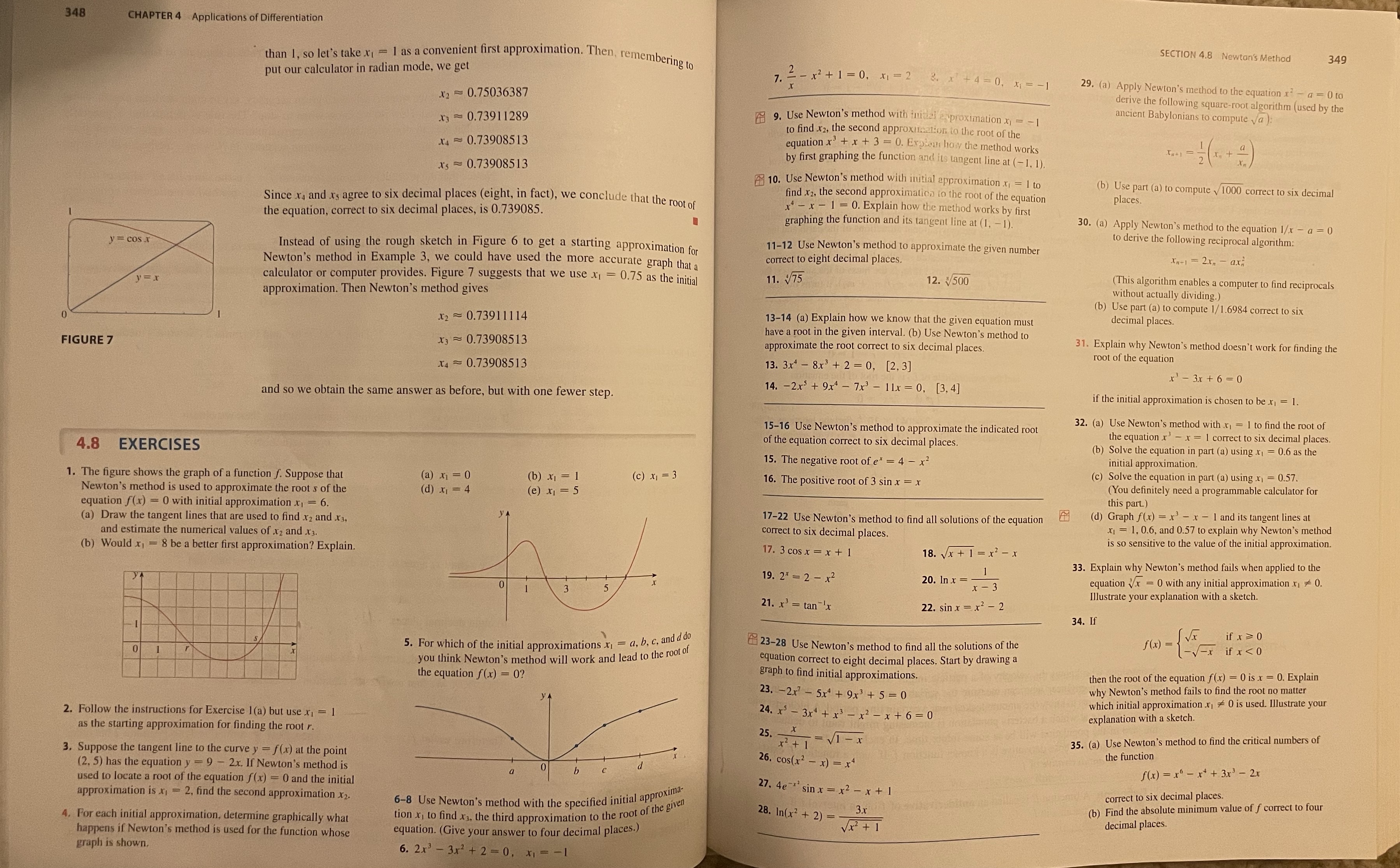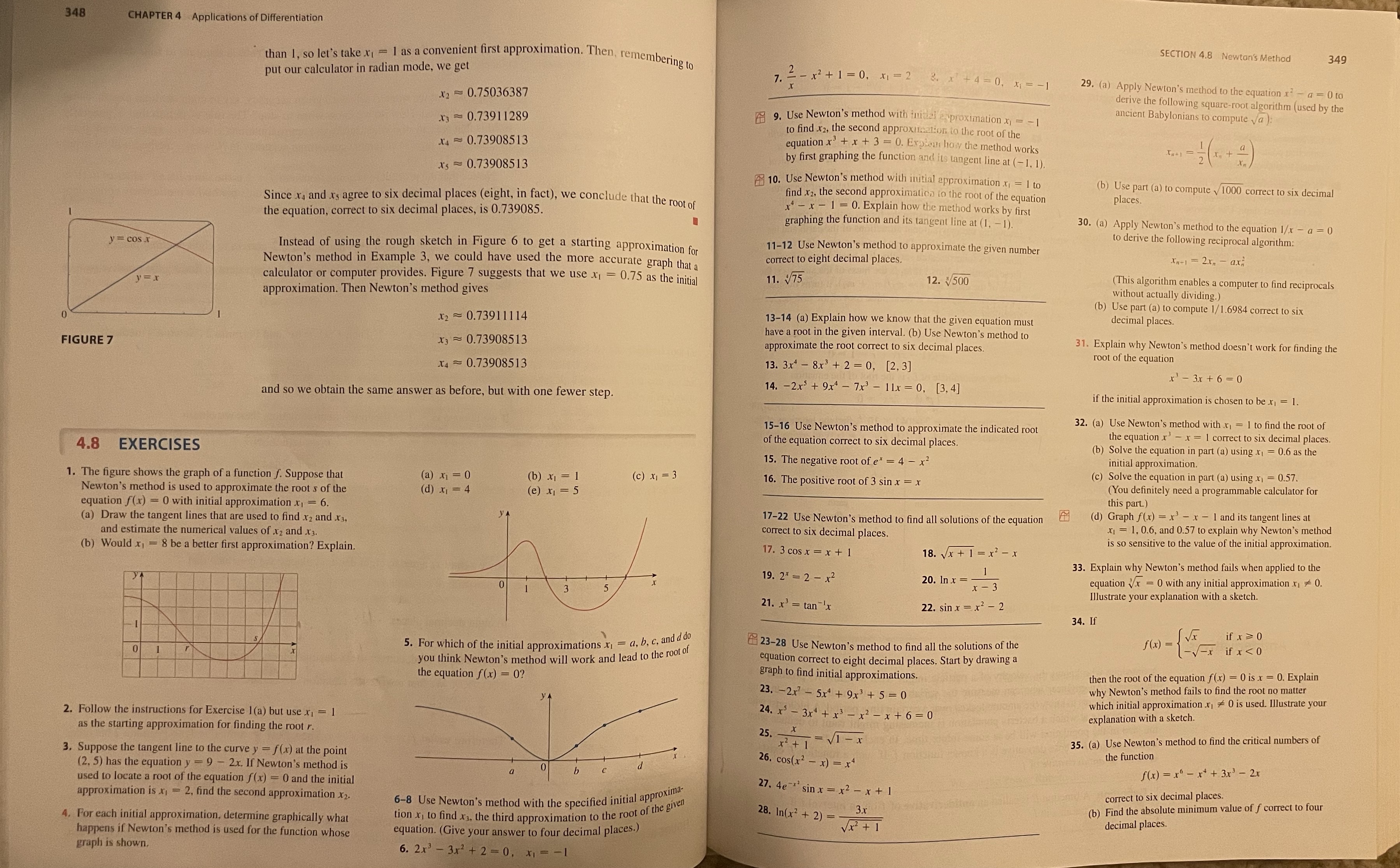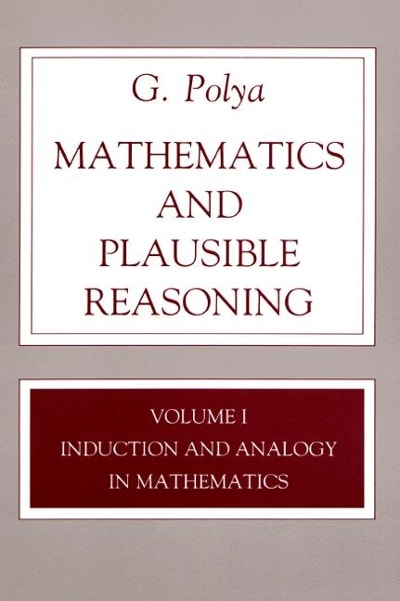
Please help with 1, 7, 11, 17, 23 please. Thank you
348 CHAPTER 4 Applications of Differentiation than 1, so let's take x1 = 1 as a convenient first approximation. Then, remembering to SECTION 4.8 Newton's Method 349 put our calculator in radian mode, we get 7. = - x2+ 1 =0, *1 = 2 8 x+4=0, x1=-1 29. (a) Apply Newton's method to the equation x - a = 0 to X'2 - 0.75036387 derive the following square-root algorithm (used by the A 9. Use Newton's method with initial e proximation x1 = -1 ancient Babylonians to compute va ): 13 ~ 0.73911289 to find x2, the second approximation to the root of the J's ~ 0.73908513 equation x' + x + 3 = 0. Explain how the method works by first graphing the function and its tangent line at (- 1, 1). A's ~ 0.73908513 10. Use Newton's method with initial approximation x, = 1 to (b) Use part (a) to compute v 1000 correct to six decimal Since x4 and x's agree to six decimal places (eight, in fact), we conclude that the root of find x2, the second approximation to the root of the equation places. the equation, correct to six decimal places, is 0.739085. 14 - x - 1 = 0. Explain how the method works by first graphing the function and its tangent line at (1, - 1). 30. (a) Apply Newton's method to the equation I/x - a = 0 to derive the following reciprocal algorithm: y = cos Instead of using the rough sketch in Figure 6 to get a starting approximation for 11-12 Use Newton's method to approximate the given number Newton's method in Example 3, we could have used the more accurate graph that a correct to eight decimal places. In - 1 = 2xn - - ax calculator or computer provides. Figure 7 suggests that we use x1 = 0.75 as the initial 11. V75 12. 500 (This algorithm enables a computer to find reciprocals approximation. Then Newton's method gives without actually dividing.) (b) Use part (a) to compute 1/1.6984 correct to six 12 - 0.73911114 13-14 (a) Explain how we know that the given equation must decimal places. have a root in the given interval. (b) Use Newton's method to FIGURE 7 *'3 - 0.73908513 approximate the root correct to six decimal places 31. Explain why Newton's method doesn't work for finding the root of the equation X4 ~ 0.73908513 13. 3.x4 - 8x3 + 2 = 0, [2, 3] x - 3x + 6 = 0 14. -2x5 + 9x4 - 7x' - 1 1x = 0, [3, 4] and so we obtain the same answer as before, but with one fewer step. if the initial approximation is chosen to be .x) = 1. 15-16 Use Newton's method to approximate the indicated root 32. (a) Use Newton's method with . = 1 to find the root of of the equation correct to six decimal places. the equation x' - x = 1 correct to six decimal places. 4.8 EXERCISES b) Solve the equation in part (a) using x, = 0.6 as the 15. The negative root of e* = 4 - x initial approximation. 1. The figure shows the graph of a function f. Suppose that (a) x = 0 (b) x1 = 1 (c) x1 = 3 16. The positive root of 3 sin x = x c) Solve the equation in part (a) using x) = 0.57. (You definitely need a programmable calculator for Newton's method is used to approximate the root s of the (d) x1 = 4 (e) x1 = 5 this part) equation f(x) = 0 with initial approximation x1 = 6. (d) Graph f(x) = x' - x - 1 and its tangent lines at (a) Draw the tangent lines that are used to find x2 and x3, 17-22 Use Newton's method to find all solutions of the equation correct to six decimal places. x1 = 1, 0.6, and 0.57 to explain why Newton's method and estimate the numerical values of x2 and x3. is so sensitive to the value of the initial approximation. (b) Would x1 = 8 be a better first approximation? Explain. 17. 3 cos x = x + 1 18. x + 1 = x2 - x 33. Explain why Newton's method fails when applied to the 19. 2*= 2-x2 20. In x = - 3 equation Vx = 0 with any initial approximation x1 0. Illustrate your explanation with a sketch. 21. x3 = tan 'x 22. sin x = x2 - 2 34. I if x 20 5. For which of the initial approximations x, = a, b, c, and d do 23-28 Use Newton's method to find all the solutions of the i- Vox ifx








